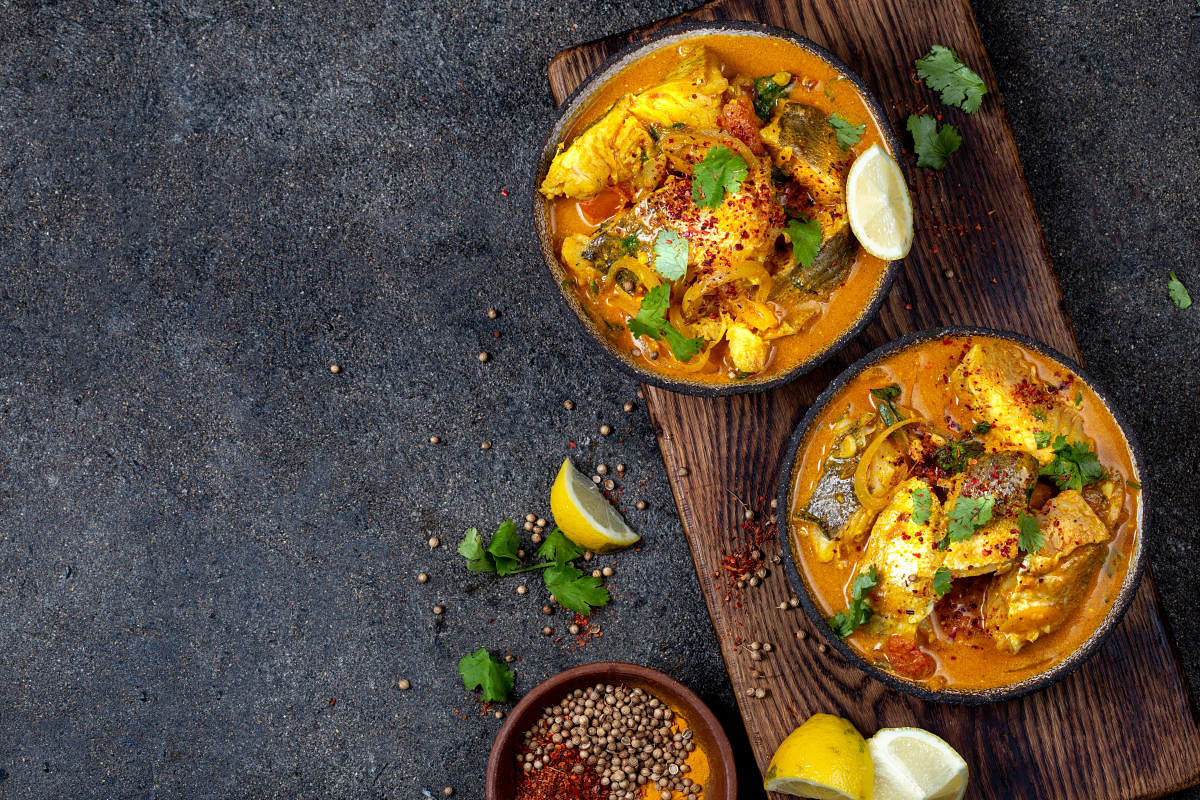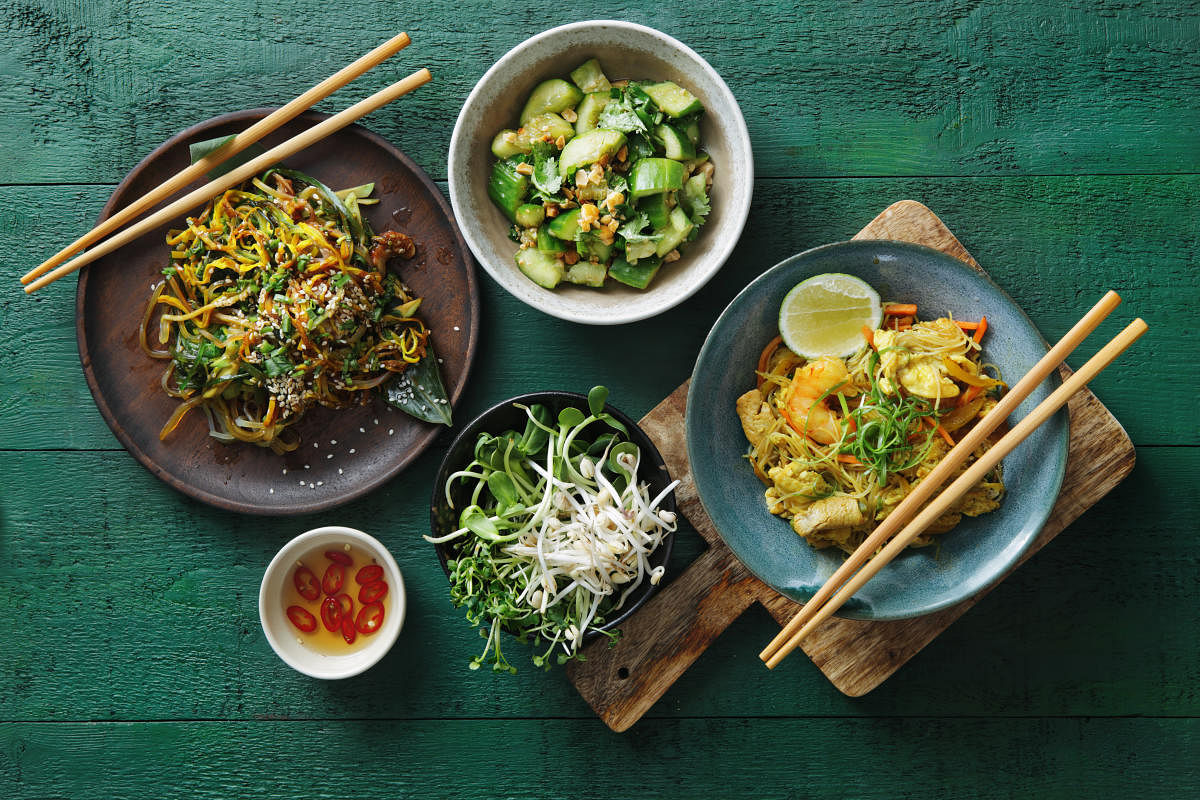

Processing food for times of scarcity has always put humans above other animals in their need for survival. Natural methods of preservation have existed for centuries and all of us have our version of a favourite pickled vegetable or jellied fruit. Fermentation and dehydration are methods that are popularly involved in this process. Apart from the regular vegetables or fruits, the preservation of meats and seafood is also very common.
Don’t eat seafood in the months without an ‘r’ is a popular saying in many parts of the world and logically true too. The summer months can cause a rise in toxins, hasten spoilage, and also bring about a reduction in the supply of fish. In our country except for May, the rest of the months without an ‘r’ account for the monsoons and these are the months when fishing becomes difficult for stormy reasons. It also is ecologically unethical, since this is breeding season for fish which allow for natural regeneration of supply. Fish, sun-dried or even cold smoke-dried is a big take in many seafaring communities. Most of the coastal regions of India are exposed to abundant sunshine and in anticipation of the rainy months when produce would be limited, fish would be sun-dried and packed into storage.
For longevity
These dried fish with varying nomenclature such as sukat macchi in Maharashtra, shukti maach in Bengal, karivadu in Kerala and Tamil Nadu, endu chepalu in Andhra and sukhua in Odisha are popular.
Similarly, the famous smoked salmon and stockfish are international varieties that are relished worldwide.
Besides dehydrating, fermenting fish is another key method to longevity.
Globally there are a variety of fermented fish delicacies such as the Korean Hongeo made from fermented stingrays or the Hakari from fermented shark and Lutefisk from fermented cod, both native to the Nordic region. A must include with these are the famous smelly Kusaya from Japan made by fermenting mackerel and fermented herrings that the Swedes love and call Surstromming or even the lesser-known Fesikh from Egyptian Grey Mullets.
Fermenting of fish is not very popular in the coastal belt of the Indian peninsula but tucked away in the northeastern corner are the contiguous states of Arunachal Pradesh, Assam, Meghalaya, Manipur, Mizoram, Nagaland, Tripura, where the fermentation of fish has been practised for generations.
The lack of an immediate coast has not deterred these communities from making fish an integral part of their cuisine. The abundant freshwater bodies have given each of these regions their staple of indigenous fish varieties.
In these parts, river carps and small pool barbs are popular and after the rainy season when the fish is in abundance, they are preserved by fermentation. Shidol in Assam, Tungtap in Meghalaya, Berma in Tripura, Napham of the Bodos or Ngari in Manipur are well-known varieties yielded from similar processes yet retaining their uniqueness.
Worth the labour
In conversation with a Manipuri friend from the Meitei community and a fourth-generation member of a family that runs the production of Ngari (pronounced with a silent N and phonetics of G from the throat), she remembered fondly how her grandmother would lead the process and how she and the other children would be keen observers. She proudly stated that this was a specialised activity amongst the communities of the valley. In her recount, she said that traditionally in her family the small pool barbs called Phabou Nga from the Loktak Lake would be fished and washed in the natural running water of the nearby streams as it is believed to improve the keeping quality of the fish. They would then be spread out on thin cane mats in the vast grounds of the family house to dry.
She said this was always during the cooler months post the annual rains when there would be enough sun and breeze to air dry the lot.
The fish, once partially dry and not fully dehydrated, would be pressed with hand-pushed stone rollers and this, she quipped was an activity the children enjoyed taking part in. The pressed fish now went into the hands of professional stompers quite like the ones who pressed grapes in early age wineries, who would use their feet to tightly pack the almost dry and pressed fish into a large tall earthen pot locally known as Kharuung.
Layer by layer the fish would be pressed down into a mustard oil-smeared pot. A slightly larger variety of fish called Yelong Nga also put through the initial process would be used in the topmost layer and this pot would be sealed and buried in the yard.
The larger pots can easily hold 40-50 kgs of fish and once under the cool grounds, the natural process would begin where the oils in the fish and the earth’s thermal energy would ensure a fine product.
She also reminisced that about halfway through the fermentation, somewhere after the second or third month, the pots would be dug out, unsealed and the top layer retrieved. The condition of this partially processed larger fish is an indication of the status of the lower layers and assures one the quality of the end product. The pot is resealed and lowered again for the remaining 3-4 months by when a fully processed Ngari would be ready for use and sale. The revealing of the top layer is something the children of the family always looked forward to as the removed fish would then be prepared and served to them.
The more commercial Shidol, Tugtap and Berma from the neighbouring states also follow a similar process though there is an addition of brine that creates a difference in its flavour.
The community that deviates from this process completely is the Bodo tribe of Assam where the dried fish is minced and then packed with other ingredients into the hollow of a bamboo, sealed and left to ferment to produce a pungent mass called Napham. The common fish used in these states is the slightly larger variety of carp called Pungti or Puti from the river Brahmaputra that runs through. The state fish of Manipur and a protected species called Pengba is also popular in the production of Ngari.
Though traditionally no catalyst was used to start the fermentation, some communities or production houses use Colocasia tuber as an organic or natural starter.
The fermenting is said to increase the protein-building amino acids and omega fatty acids in the raw fish creating a very healthy ingredient and when this is prepared with a variety of local spices and greens, the dish becomes a powerhouse of immunity and nutrition.
The most common way to consume Shidol is in the form of a pungent spicy chutney with a variety of ingredients such as chillies, ginger, garlic, shallots, turmeric, etc. The accurate specification of its preparation is almost always a family recipe. Ngari, also a pungent condiment, is, on the other hand, used to flavour almost all vegetable and fish dishes of Manipur, the most famous being the Eromba an oil-less dish of tubers and other vegetables.
With such diverse food and cultural traditions, we as a nation have many cuisines that offer myriad benefits for our daily diet.